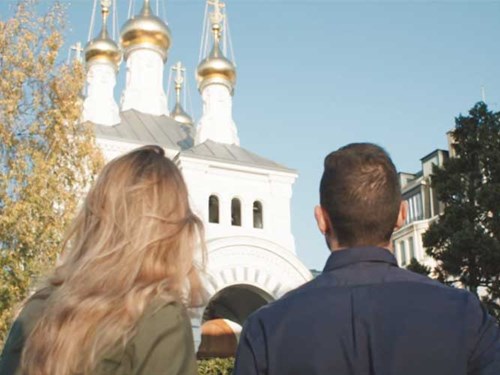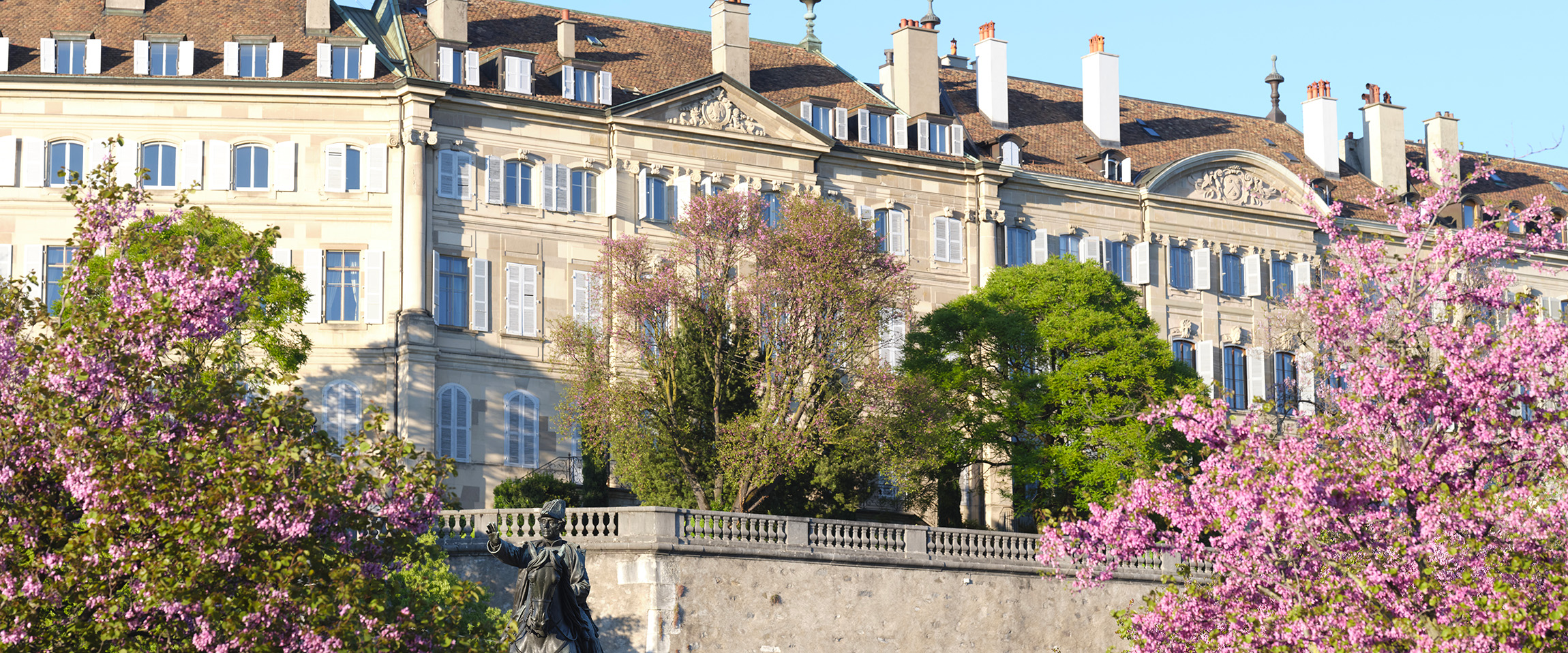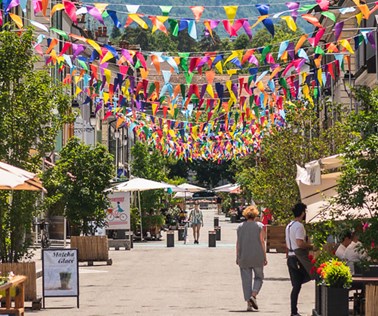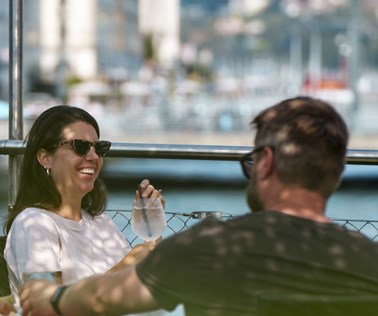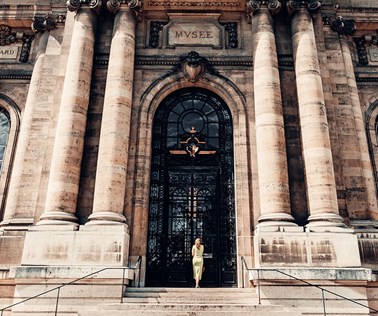A walk through the heart of Geneva
A walk through the heart of Geneva
Go for a lovely walk through the heart of the city and explore Geneva’s fascinating history. Discover the must-see monuments.
- Starting point: Place des Nations (buses 5, 8, 11 and F)
- This walk lasts about 4 hours (without taking into account the tours)
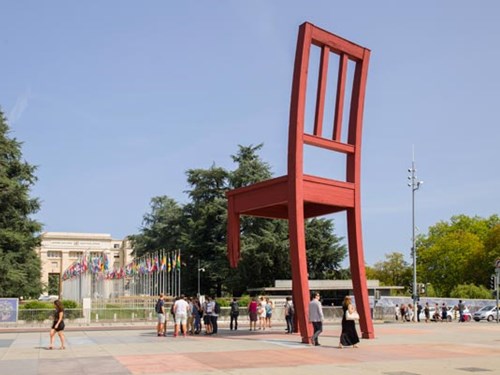
Broken Chair
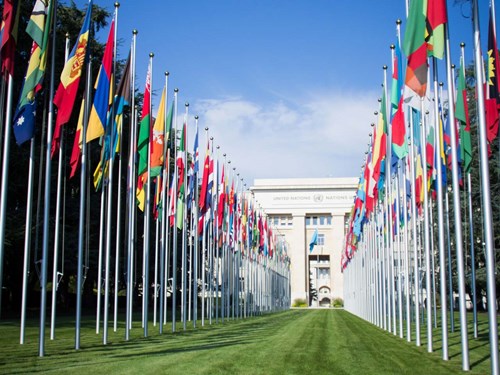
Palais des Nations
> Go back into the bus 5, 8 or F to Geneva Cornavin Railway Station.
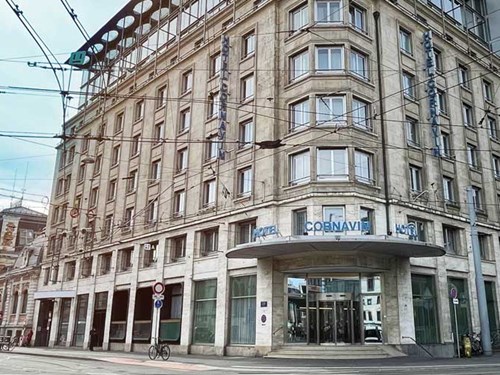
Hôtel Cornavin
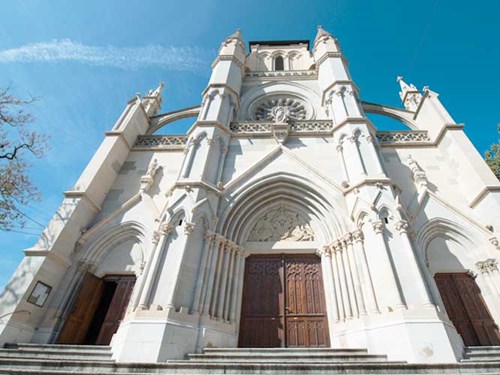
Basilica of Notre-Dame
Built between 1852 and 1857, the Basilica of Notre-Dame is the main place of worship for Geneva’s Catholic community. Pilgrims stop there on their way to Santiago de Compostela. In 1875, the Basilica was occupied then closed, after the anticlerical government came to power. The Catholic Church was able to buy it back in 1911. Its architecture was inspired by the 13th century Gothic style.
> Walk down the Rue des Alpes or the Rue Chantepoulet.
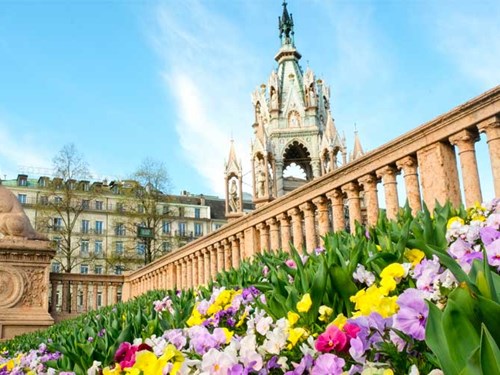
Brunswick Monument
> Cross the Pont du Mont-Blanc and walk along the lake to the Jet d’Eau.
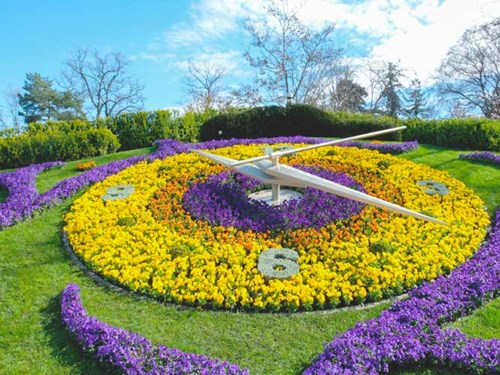
Flower Clock
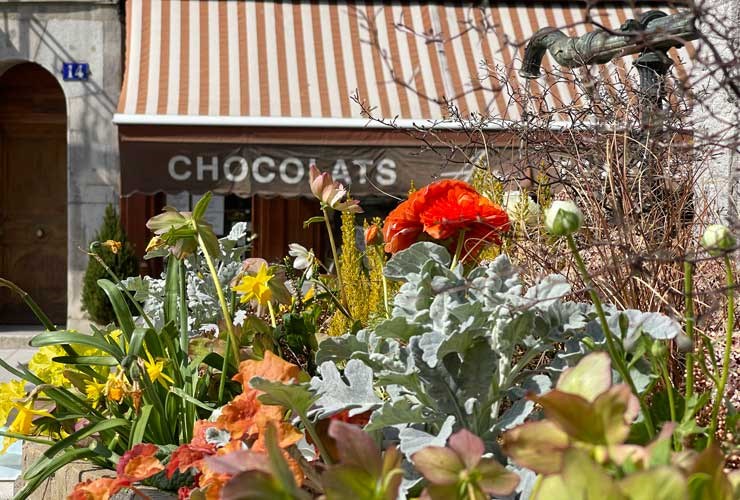

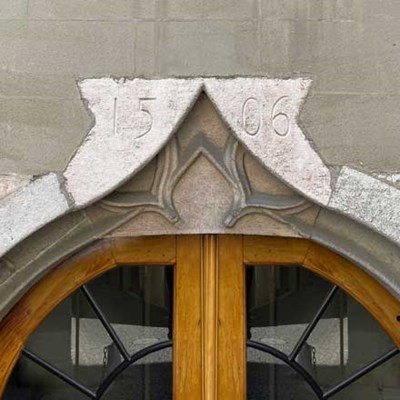
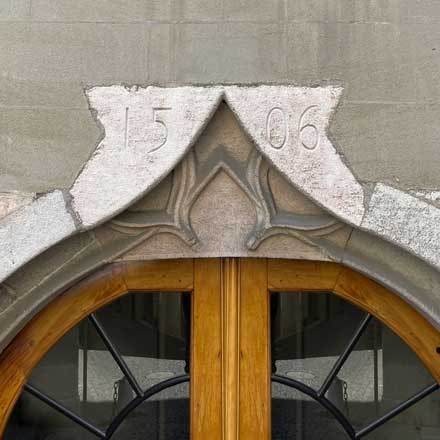
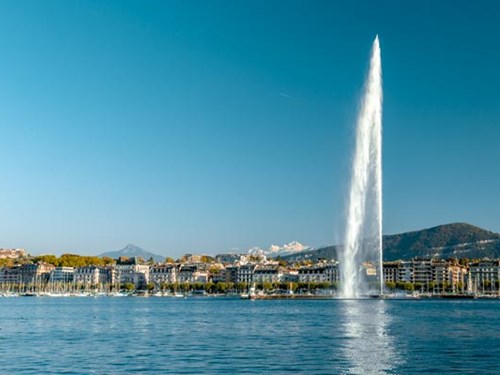
Jet d’Eau
> Retrace your steps to the gateway to the Old Town.
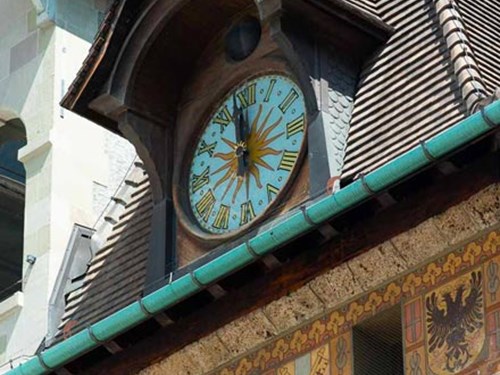
Molard Tower
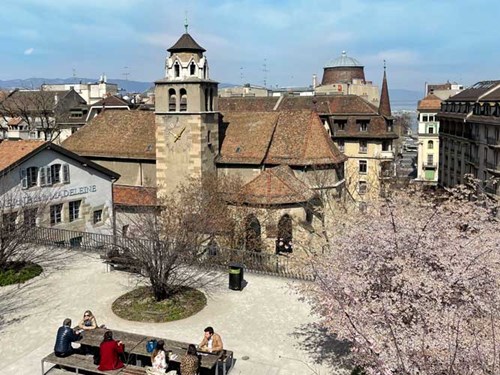
Temple de la Madeleine
The Temple de la Madeleine played a major role during the Reformation and calls to mind such names as Jean Calvin, Guillaume Farel and Michel Servet. The building dates back to the 15th century, but had to be restored after it caught fire in the 17th century. Since the 1960s, the church has been the place of worship for Geneva’s Swiss-German speaking community, and boasts beautiful stained-glass windows. The Temple de la Madeleine has been dominating a shopping, historic, colourful square.
> Take the Rue du Marché and walk along the Rue de la Corraterie.
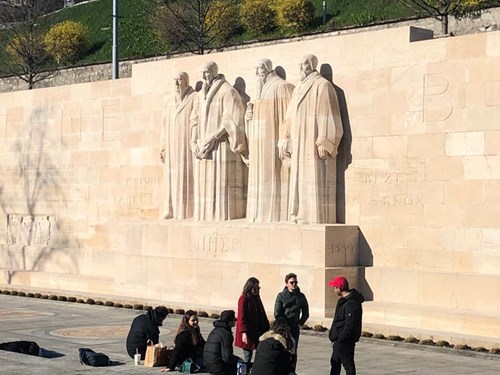
Reformation Wall (Parc des Bastions)
> Walk up to the Old Town.
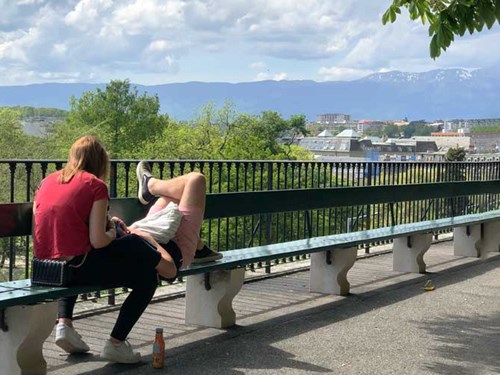
Banc de la Treille
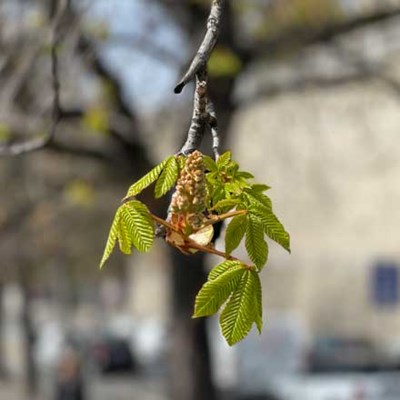
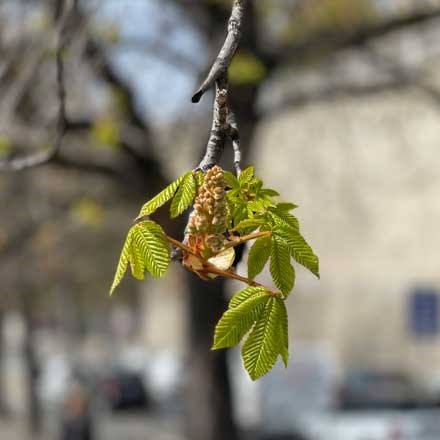
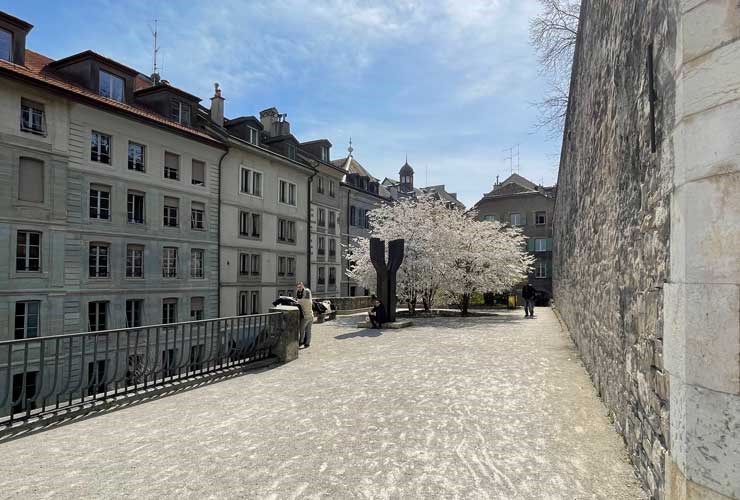

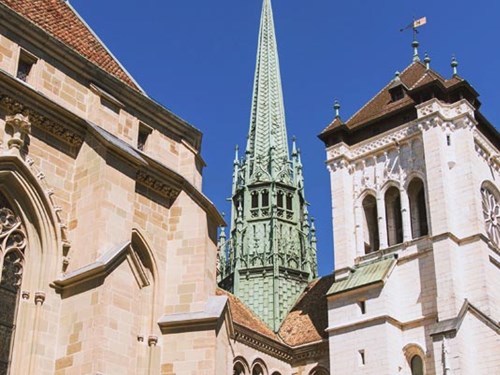
St Peter’s Cathedral
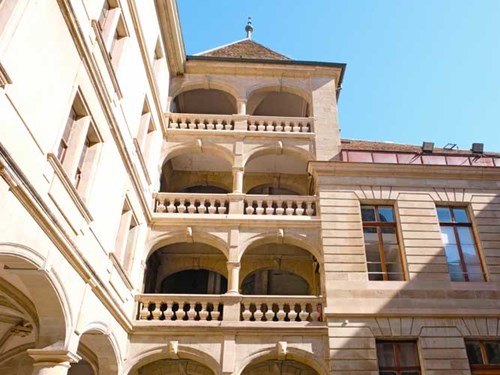
The Town Hall is a fteenth-century architecture equipped with a large and unique access ramp.
> Walk past St Antoine’s prison and the Museum of Art and History.
